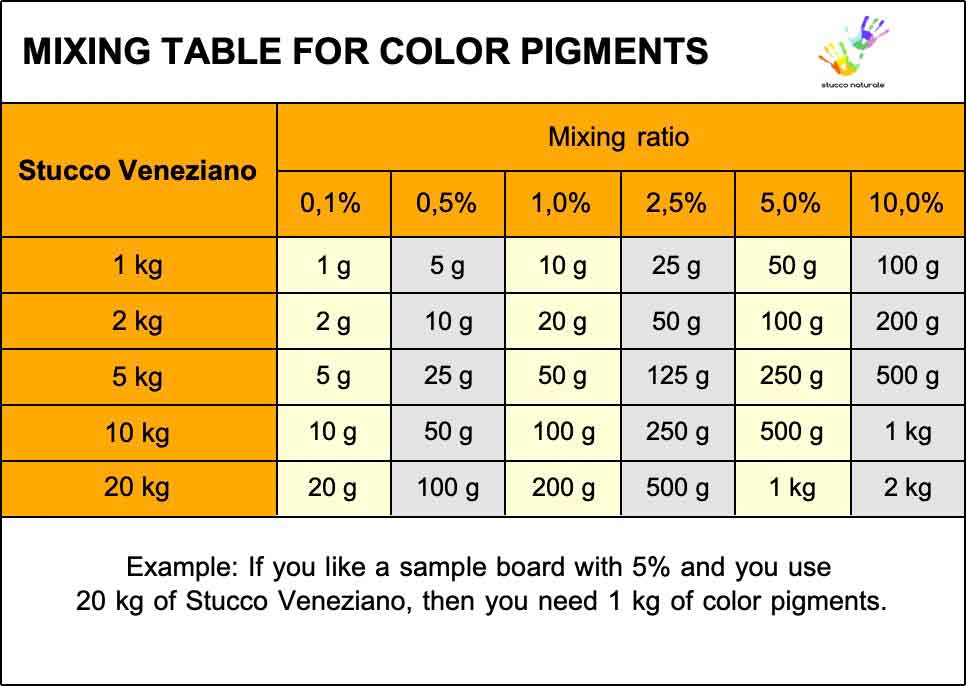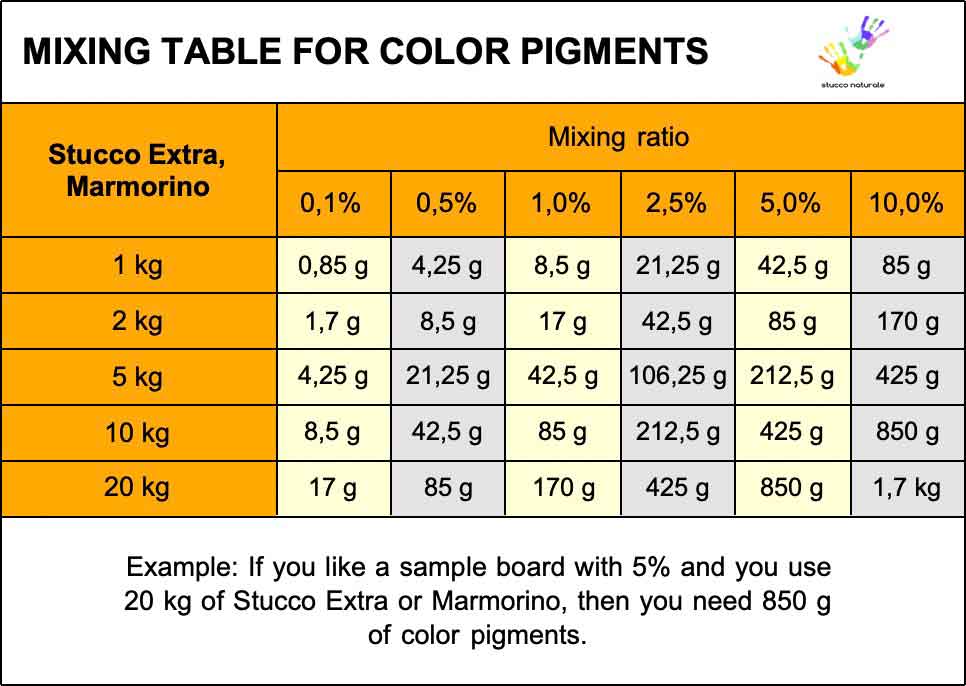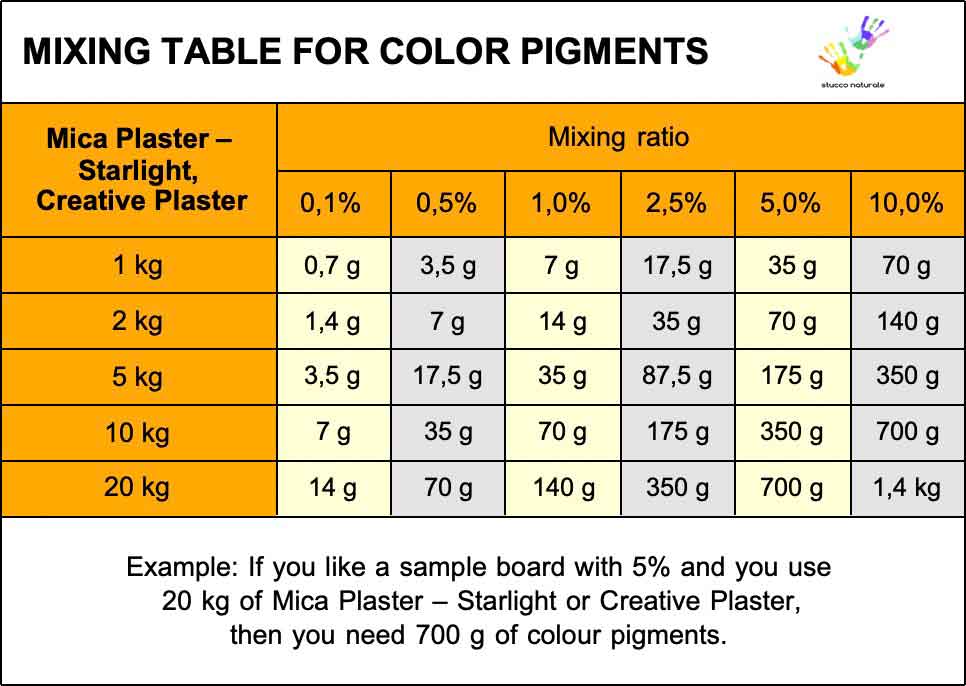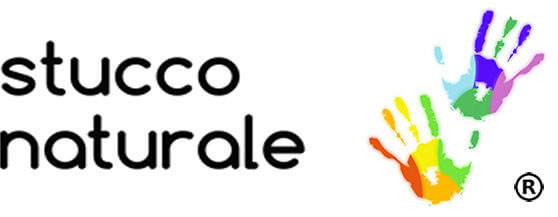Mixing instructions for color pastes
Dry colours and coloured doughs
Up to 10 % pigments (by weight) can be stirred into the putties and lime paint. The lime cannot bind more than this and chalking would occur. If the dry colours, also called pigments, are stirred into the putty without having made a colour dough, a beautiful coloured mass is also produced. However, there is a high probability that pigment spots will appear. This means that some pigments will leave traces in the form of stripes or dots when the mass is puttied. This does not necessarily have to be a disadvantage, it can also be seen as a nice side effect. However, if you want to avoid these pigment spots, mix a colour paste.
This is how it works:
For 1000 g of pigment, use about 800ml of liquid (160 ml wetting agent and 640 ml of water). Pour the liquids into a container and add the pigments, stir well with a painting knife or a stucco cateureisen and rub; crush lumps at the edge of the container. It is best to make a note of the mixing recipe so that you can make the same shade again. Allow to soak in for 3 hours and mix this paste into the putty or lime paint. Pigments have the highest colour intensity and set no limits to your creativity. Only use lime-compatible pigments.
Tip:
When working with chrome oxide green, cobalt blue,titanium white or similar hard pigments, use a Venetian PVC smoothing trowel to compact.
Mixing tables for use in various marble plasters
The sample images with the percentage indicated on the individual product pages of our colour pigments are all made with Stucco Veneziano. To obtain the same shade when working with different marble plasters in the same room, you can use the mixing tables.








